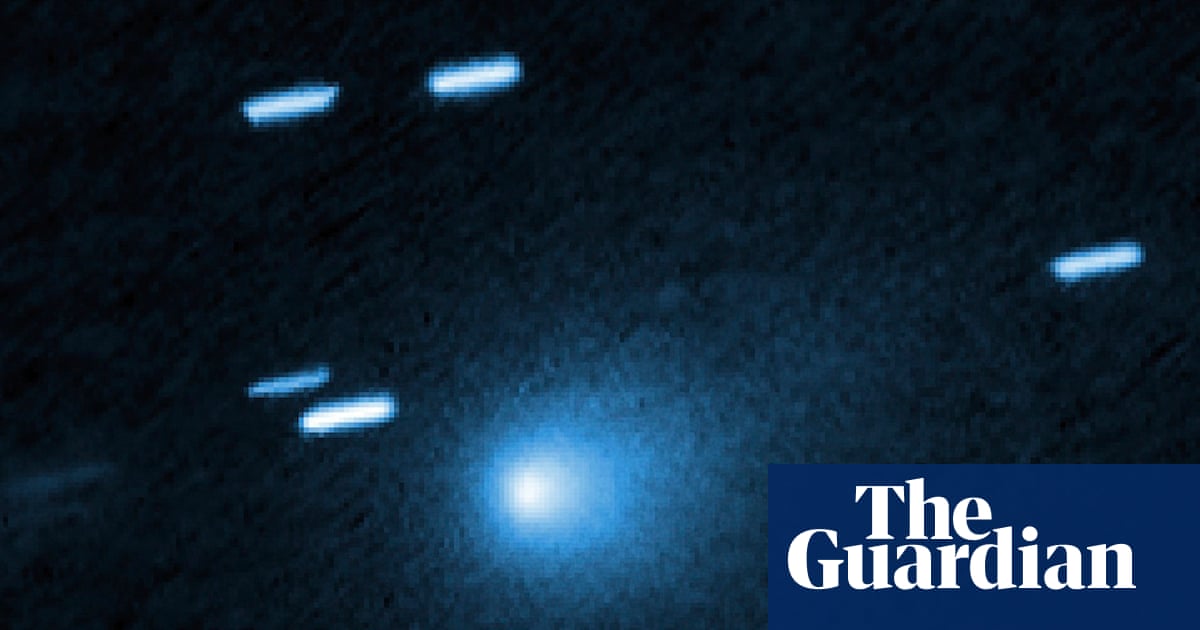A groundbreaking study recently published in the Planetary Science Journal has raised the possibility that asteroids Bennu, Ryugu, and Polana may all be fragments of a common parent body. The paper, titled “JWST Spectroscopy of (142) Polana: Connection to NEAs (101955) Bennu and (162173) Ryugu”, delves into the spectral data of these three asteroids, offering insights into their shared origins. Through the powerful James Webb Space Telescope (JWST), researchers were able to observe Polana, the largest member of a potential asteroid family, and compare its near-infrared spectral data with those of Bennu and Ryugu, which have both been studied by NASA’s OSIRIS-REx mission and Japan’s Hayabusa2 mission. The study suggests that these three asteroids may all stem from the same ancient collision, providing a fascinating glimpse into the formation of our solar system.
Origins of Polana, Bennu, and Ryugu: A Family of Asteroids
“Very early in the formation of the solar system, we believe large asteroids collided and broke into pieces to form an ‘asteroid family’ with Polana as the largest remaining body,” said Dr. Anicia Arredondo, the lead author of the study. This statement encapsulates the core hypothesis of the research: that a massive collision occurred billions of years ago, resulting in the fragmentation of a single, much larger asteroid. Polana, the largest surviving fragment of this collision, is thought to have remained relatively unchanged compared to its smaller counterparts, Bennu and Ryugu, which are both much closer to the Sun today.
Arredondo and her team applied cutting-edge spectral techniques, using the JWST to observe Polana in detail. The near-infrared spectra from the asteroid were compared with the samples returned from Ryugu and Bennu, providing vital clues about their composition and structure. “Theories suggest that remnants of that collision not only created Polana, but also Bennu and Ryugu as well,” Arredondo added. By observing the spectral data from all three asteroids, the team was able to make a compelling case for the idea that these bodies might share a common origin.
Spectral Data Comparison: Unveiling a Shared Parent Body
One of the major revelations of the study is the striking similarities between the spectral signatures of Polana, Bennu, and Ryugu. While the surfaces of these asteroids show minor variations, such as differences in the degree of weathering or solar radiation exposure, the overall composition appears closely linked. “They are similar enough that we feel confident that all three asteroids could have come from the same parent body,” Arredondo said. This conclusion is based on spectral analysis, which allowed scientists to study the minerals and other compounds on the surface of each asteroid, revealing similar compositions.
The fact that all three bodies share a similar composition, despite their varied sizes and locations in the solar system, supports the theory of a shared origin. Polana, much larger than Bennu and Ryugu, may have retained more of its original surface material, whereas the smaller asteroids have likely undergone more significant changes due to their proximity to the Sun. This difference in exposure to solar radiation and micrometeoroid impacts is crucial for understanding how their surfaces have evolved differently over time.
Solar Radiation and Micrometeoroid Impacts: How The Asteroids Have Evolved
The study also highlighted how each asteroid’s surface has been altered differently due to the unique conditions of their orbits. “Polana, Bennu and Ryugu have all had their own journeys through our solar system since the impact that may have formed them,” said Dr. Tracy Becker, a co-author of the study. The proximity of Bennu and Ryugu to the Sun means their surfaces have been exposed to much more intense solar radiation and solar particles. These conditions likely have had a profound impact on the surface composition of these asteroids, causing changes that are less evident on Polana, which remains farther from the Sun.
“Likewise, Polana is possibly older than Bennu and Ryugu and thus would have been exposed to micrometeoroid impacts for a longer period,” Becker continued. Micrometeoroid impacts, which constantly bombard asteroids, cause surface weathering that alters the composition of the outer layers. Since Polana has been exposed to these impacts for a longer time, its surface may have experienced more significant changes compared to the relatively younger Bennu and Ryugu. These variations in surface age and exposure contribute to the differences observed in their spectral data, though the similarities are still striking.
Source link


